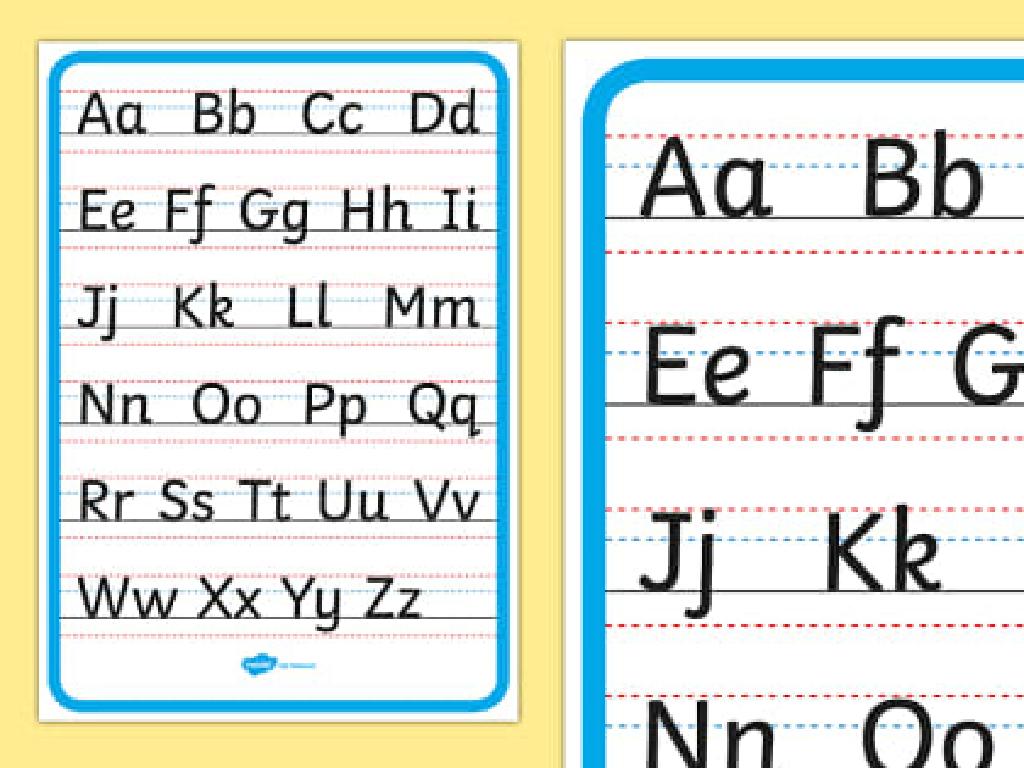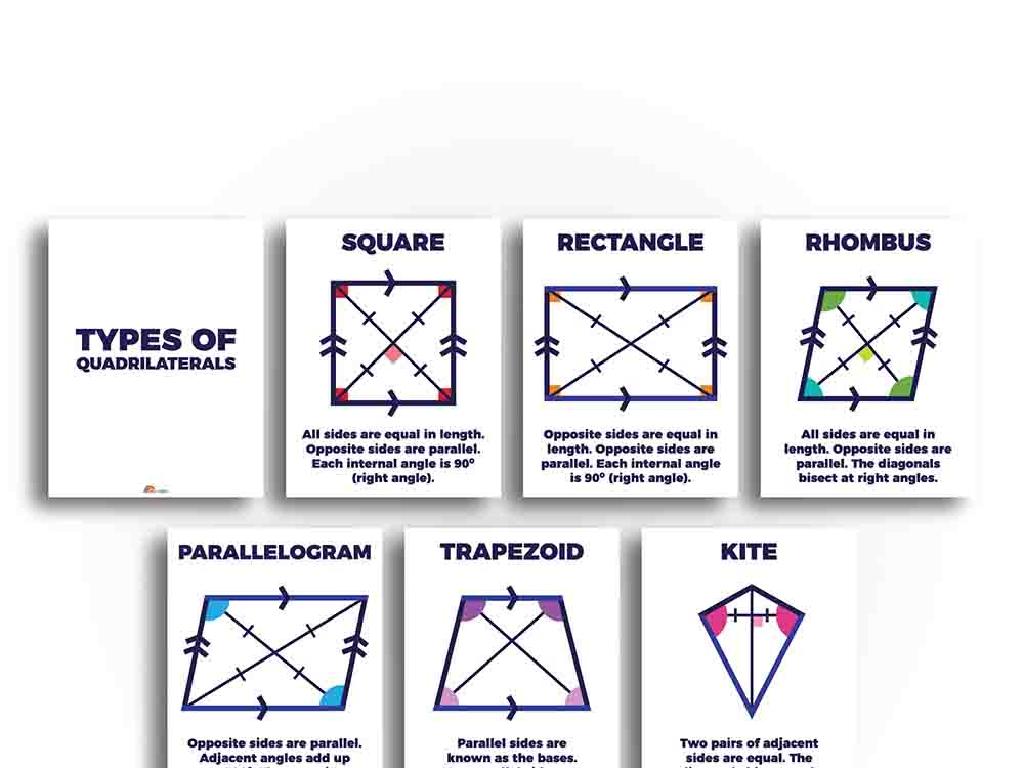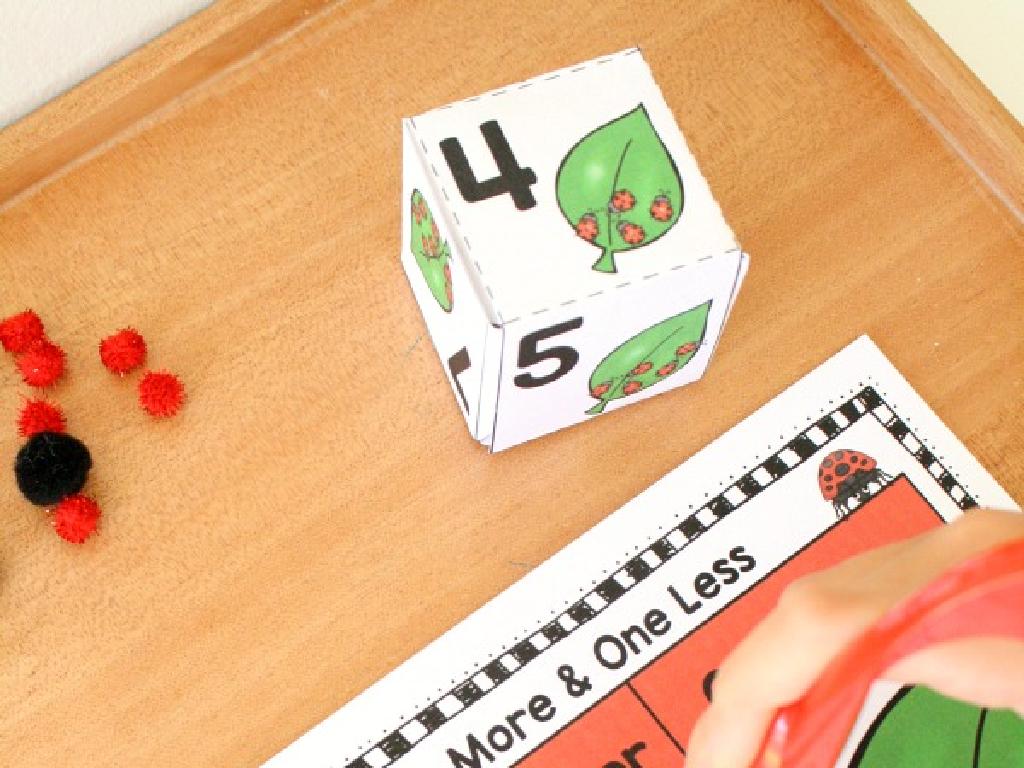Describe The Difference Between Related Words
Subject: Language arts
Grade: Seventh grade
Topic: Word Choice And Usage
Please LOG IN to download the presentation. Access is available to registered users only.
View More Content
The Power of Word Choice in Language Arts
– Welcome to Language Arts!
– Discover the power of words
– Words can create vivid imagery and emotions
– Importance of careful word choice
– Choosing the right word can clarify meaning
– Impact of words on meaning and tone
– Words shape how readers perceive your message
|
This slide introduces the concept of word choice and its significance in Language Arts. Emphasize to students that the words they choose in their writing can greatly affect the imagery, emotions, and overall understanding of their message. Discuss how synonyms can have subtle differences and choosing the right one can make their writing more precise and engaging. Explain that word choice also affects the tone of the writing, which is how it ‘feels’ to the reader. Encourage students to think about how they react to different words and to be mindful of the words they select when expressing themselves.
Understanding Synonyms
– Define synonyms
– Words with similar meanings, e.g., ‘happy’ and ‘joyful’.
– Synonyms in action
– ‘Quick’ vs. ‘swift’: Both mean fast, but ‘swift’ has a slightly more graceful connotation.
– Nuances of meaning
– ‘Shout’ vs. ‘yell’: Both involve loud voices, but ‘shout’ can be positive or negative, while ‘yell’ is often negative.
– Impact on expression
– Choosing the right synonym affects the tone and clarity of our writing.
|
This slide introduces the concept of synonyms and emphasizes their importance in language arts. Synonyms are words that have similar meanings, but they can carry different connotations and subtle variations in meaning. Provide examples to illustrate how synonyms can slightly change the meaning of a sentence and affect the reader’s perception. Encourage students to think about the impact of word choice on expression and to consider the nuances of synonyms when writing. This understanding will help them to enhance their writing style and convey their thoughts more precisely.
Connotation vs. Denotation
– Denotation: Dictionary definition
– Connotation: Feelings or ideas
– Connotations are the emotions or associations a word invokes
– Words with similar denotations
– ‘House’ vs. ‘Home’: Both refer to a dwelling but ‘home’ has a warmer connotation
– Activity: Exploring connotations
– List connotations for words like ‘childish’ vs. ‘youthful’
|
This slide introduces students to the concepts of connotation and denotation, highlighting the difference between a word’s literal meaning and the feelings it may evoke. Provide examples of words that, while having similar dictionary definitions, carry different connotations. For the activity, students will identify and discuss the connotations of a set of given words, enhancing their understanding of how word choice can affect perception and communication. Encourage students to think about the connotations of words they use in their daily language and how it might affect their message.
Choosing the Right Word
– Context shapes word choice
– Words can change meaning depending on the sentence.
– Word choice affects the audience
– The right words can engage or persuade readers.
– Activity: Refine sentences
– Rewrite given sentences using more specific vocabulary.
– Enhance precision in writing
– Practice selecting words that convey the exact idea.
|
This slide introduces the concept of word choice and its significance in communication. Context is crucial as it can entirely alter the meaning of a word; therefore, understanding the context is key to selecting the appropriate word. The impact of word choice extends to the audience, influencing their engagement and perception. The class activity involves rewriting sentences to replace vague or general words with more precise and descriptive terms, enhancing clarity and effectiveness. This exercise will help students to think critically about language and improve their writing skills. For the activity, provide sentences that are general and lack specificity, and guide students to choose words that better fit the context and convey a clearer message. Encourage peer review to foster collaborative learning.
Homonyms, Homophones, and Homographs
– Define homonyms, homophones, homographs
– Homonyms: same spelling/pronunciation but different meanings. Homophones: sound alike, different spelling/meaning. Homographs: same spelling, different pronunciation/meaning.
– Explore examples of each
– Homonyms: ‘bat’ (animal) and ‘bat’ (sports equipment). Homophones: ‘knight’ and ‘night’. Homographs: ‘lead’ (to guide) and ‘lead’ (metal).
– Discuss their differences
– Homonyms can be both homophones and homographs, but each has unique features.
– Class activity: Identify and categorize
– Students will find words fitting each category from reading materials.
|
This slide introduces students to the concepts of homonyms, homophones, and homographs, which are all types of words that can cause confusion due to their similarities. Provide clear definitions and examples for each to help students understand the subtle differences. Homonyms have the same spelling or pronunciation but different meanings. Homophones sound the same but have different spellings and meanings. Homographs are spelled the same but have different pronunciations and meanings. After discussing the definitions and examples, engage the students in a class activity where they identify and categorize words from their reading materials or previous lessons into the three categories. This will help reinforce their understanding through practical application.
Practice with Related Words
– Match related words activity
– Discuss best-fit words for sentences
– Why does this word work better in context?
– Group work: craft sentences
– Use a given set of related words to make new sentences.
– Share and review as a class
– Groups present their sentences; class discusses the word choices.
|
This slide outlines a class activity focused on understanding the nuances between related words. Begin with a matching activity where students pair related words. Then, discuss as a class why certain words fit better in specific sentences, emphasizing context. For group work, students will create their own sentences using a provided list of related words, which encourages them to think critically about word choice. Conclude with groups sharing their sentences and receiving feedback. This interactive approach helps students grasp the importance of selecting the right word to convey the intended meaning in their writing.
Class Activity: Word Choice Challenge
– Form groups and pick a scenario
– Describe the scenario with precise words
– Think about synonyms and select the most fitting ones
– Present and explain your word choices
– Share why you chose each word and what effect it has
– Class votes on the best word usage
|
This activity is designed to enhance students’ understanding of word nuances and the importance of precise language. Divide the class into small groups and provide a variety of scenarios. Encourage them to discuss and choose words that accurately convey the scenario’s details and emotions. Each group will then present their scenario, explaining the rationale behind their word choices. After all presentations, the class will vote on which group used language most effectively. This peer-review process notifies students about the impact of word choice in communication. For the teacher: Prepare diverse scenarios, guide students on considering connotations, and facilitate the voting process fairly.
Conclusion: Choosing Words Wisely
– Recap: word choice and usage
– Select words for clarity and impact
– The right word can make your message clear and powerful.
– Homework: write a precise story
– Use the words that best express your story’s ideas and emotions.
– Share stories in the next class
– We’ll discuss how your word choices enhance your storytelling.
|
Today’s lesson emphasized the importance of word choice and usage in writing. It’s crucial for students to understand that the words they choose can greatly affect the clarity and impact of their communication. For homework, students are tasked with writing a short story where they must carefully select words that accurately convey their intended message and emotions. This exercise will help them practice the skills learned today and prepare them for the next class, where they will share their stories and receive feedback on their word choices.






